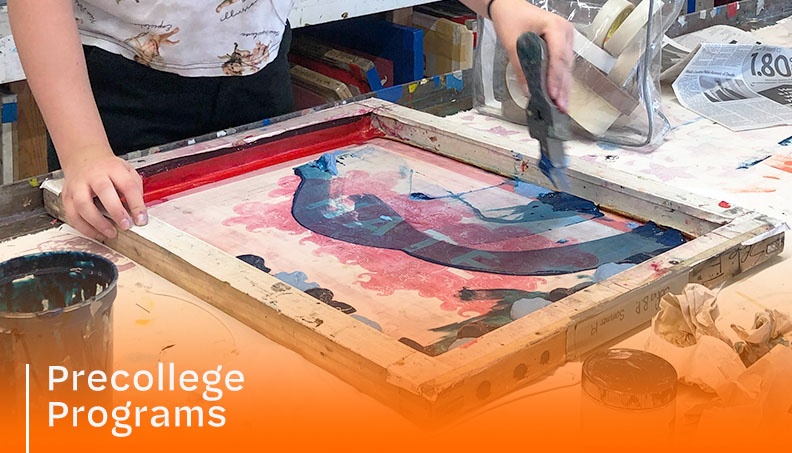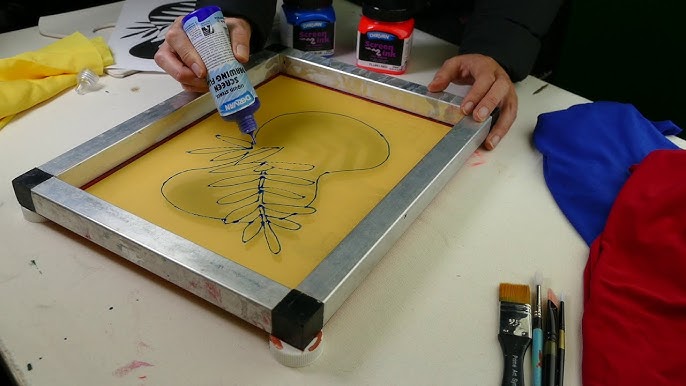ChatGPT said: Behind the scenes at 10:9 Design LLC Company screen printing process
The Crucial Guide to Understanding Screen Printing and Its Versatile Utilizes
Screen printing has an abundant background that dates back to ancient times, developing right into an innovative strategy utilized across different industries today. This overview checks out the intricacies of the screen printing process, describing its applications in fashion, advertising and marketing, and home style - 10:9 Design contact. Recognizing these principles can open up imaginative potential for both industrial and creative projects. The adhering to areas will certainly disclose necessary ideas and techniques to improve one's screen printing ventures
The History of Screen Printing
Screen printing has roots that map back centuries, its evolution mirrors the creative and technical improvements of different cultures. Coming from ancient China, the strategy was initially used for enhancing fabrics and later spread to Japan, where it ended up being integral to Ukiyo-e woodblock printing. The technique shifted to Europe in the 18th century, where it acquired popularity among craftsmens and commercial printers. The invention of photo solution in the 20th century reinvented screen printing, permitting even more complex designs and better efficiency. Musicians like Andy Warhol better drove its popularity, making use of the medium to create famous works that combined commercialism and great art. By the late 20th century, screen printing had actually established itself as a versatile method, employed in fashion, advertising, and great art. Today, it remains to evolve, incorporating electronic technology and expanding its applications across various sectors.
The Screen Printing Process Explained
Screen printing changes artistic visions into concrete layouts via a collection of precise steps. A picture is developed and then transferred onto a screen, commonly made of great mesh fabric stretched over a framework. A light-sensitive emulsion is applied to the screen, which is exposed to light, solidifying in areas not covered by the image. After rinsing the unhardened solution, a stencil is formed.
Next, the screen is positioned over the substrate, whether it be textile, paper, or one more product. Ink is after that pressed through the open locations of the stencil making use of a squeegee, transferring the layout onto the substrate below. This procedure can be duplicated for multiple colors, calling for different screens for each hue. The printed product is treated using heat to ensure the ink adheres correctly, resulting in a sturdy, lively design all set for usage.
Sorts Of Screen Printing Techniques

In addition, specialty strategies, such as discharge screen printing, eliminate dye from the fabric to develop softer prints, while foil screen printing uses metallic foil to achieve a glossy coating (10:9 Design Embroidery). Each strategy offers unique qualities, dealing with here numerous imaginative needs and manufacturing ranges, eventually increasing the possibilities within the screen printing domain name
Applications of Screen Printing in Various Industries

Additionally, the signage and advertising fields utilize screen printing for creating captivating screens and banners. This method enables bold colors and intricate styles that catch focus. In electronics, screen printing is employed for using conductive inks to circuit boards, crucial for component links. The home style sector embraces screen printing to create distinct styles on textiles and wall surface art. In general, screen printing functions as an essential device across varied fields, improving products with personalized and visually appealing graphics.
Tips for Effective Screen Printing Projects
While embarking on a screen printing project, cautious focus to information can significantly boost the final result. Initially, selecting top quality materials is essential; this consists of the screen, inks, and substrates. Utilizing ideal mesh counts can affect ink deposition and information resolution. Preparation is just as crucial; complete cleaning of screens and proper direct exposure times assure crisp prints.
Next, exact enrollment is crucial for multi-color prints. Utilizing alignment tools can aid accomplish specific layering. Furthermore, screening prints on scrap materials prior to manufacturing helps recognize potential issues without squandering resources.

Regularly Asked Concerns
What Materials Are Ideal for Screen Printing on Material?
Cotton and polyester blends are excellent for screen printing on textile because of their longevity and ink absorption. Additionally, specialty materials like silk or canvas can create one-of-a-kind structures and surfaces, enhancing the general style high quality.
How Do I Clean and Maintain Screen Printing Equipment?
To clean and maintain screen printing equipment, one must on a regular basis wash displays with proper solvents, check squeegees for wear, lubricate moving components, and store all things in a completely dry, dust-free environment to lengthen their life expectancy.
What Are the Environmental Effects of Screen Printing?
Screen printing can have significant environmental impacts, consisting of chemical waste from solvents and inks, water use during cleaning processes, and energy usage. Eco-friendly products and lasting techniques are vital for decreasing these adverse results.
Can Screen Printing Be Done in the house Successfully?
Screen printing can be efficiently done at home with the appropriate products and techniques. Enthusiasts can produce quality prints, though success depends on their skill level, equipment, and understanding of the procedure entailed.
What Are the Prices Related To Starting a Screen Printing Organization?

Starting a screen printing company includes prices for devices, products, and work area. Initial expenditures generally vary from a few hundred to numerous thousand bucks, relying on the range, high quality of machinery, and desired production ability.
Screen printing has an abundant history that dates back to old times, advancing right into an innovative technique utilized throughout various industries today. One more technique, rotary screen printing, employs cylindrical displays, assisting in constant printing on textile rolls, consequently improving efficiency for massive productions. Furthermore, specialty techniques, such as discharge screen printing, remove dye from the material to create softer prints, while aluminum foil screen printing uses metal foil to achieve a shiny coating. In the fashion industry, screen printing is commonly utilized to develop lively layouts on clothing, enabling brands to display their one-of-a-kind designs. Cotton and polyester blends are excellent for screen printing on material due to their sturdiness and ink absorption.